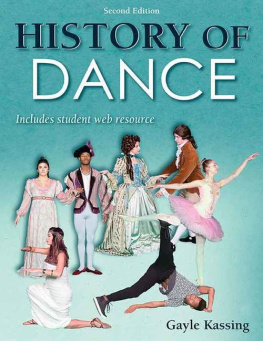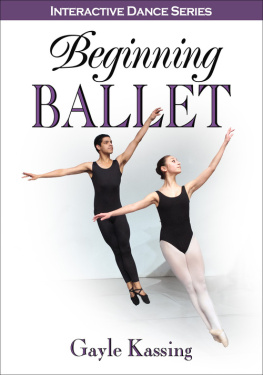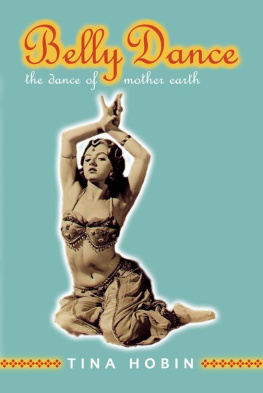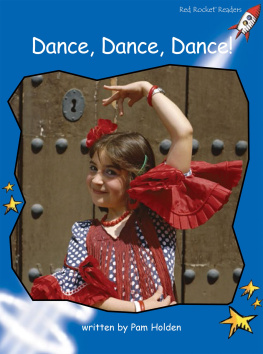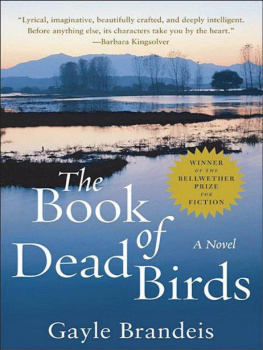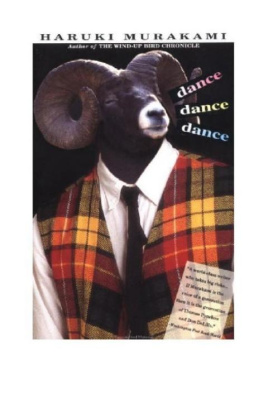Gayle Kassing - History of dance
Here you can read online Gayle Kassing - History of dance full text of the book (entire story) in english for free. Download pdf and epub, get meaning, cover and reviews about this ebook. City: Champaign, year: 2018, publisher: Human Kinetics, genre: Art. Description of the work, (preface) as well as reviews are available. Best literature library LitArk.com created for fans of good reading and offers a wide selection of genres:
Romance novel
Science fiction
Adventure
Detective
Science
History
Home and family
Prose
Art
Politics
Computer
Non-fiction
Religion
Business
Children
Humor
Choose a favorite category and find really read worthwhile books. Enjoy immersion in the world of imagination, feel the emotions of the characters or learn something new for yourself, make an fascinating discovery.
- Book:History of dance
- Author:
- Publisher:Human Kinetics
- Genre:
- Year:2018
- City:Champaign
- Rating:4 / 5
- Favourites:Add to favourites
- Your mark:
- 80
- 1
- 2
- 3
- 4
- 5
History of dance: summary, description and annotation
We offer to read an annotation, description, summary or preface (depends on what the author of the book "History of dance" wrote himself). If you haven't found the necessary information about the book — write in the comments, we will try to find it.
History of dance — read online for free the complete book (whole text) full work
Below is the text of the book, divided by pages. System saving the place of the last page read, allows you to conveniently read the book "History of dance" online for free, without having to search again every time where you left off. Put a bookmark, and you can go to the page where you finished reading at any time.
Font size:
Interval:
Bookmark:

Second Edition
Gayle Kassing, PhD

Library of Congress Cataloging-in-Publication Data
Names: Kassing, Gayle.
Title: History of dance / Gayle Kassing, PhD.
Description: Second edition. | Champaign, IL : Human Kinetics, [2018] |
Includes bibliographical references and index.
Identifiers: LCCN 2017002407 (print) | LCCN 2017002883 (ebook) | ISBN
9781492536697 (print) | ISBN 9781492536710 (e-book)
Subjects: LCSH: Dance--History. | Dance--United States--History.
Classification: LCC GV1601 .K37 2018 (print) | LCC GV1601 (ebook) | DDC
792.8--dc23
LC record available at https://lccn.loc.gov/2017002407
ISBN: 978-1-4925-3669-7 (print)
Copyright 2017, 2007 by Gayle Kassing
All rights reserved. Except for use in a review, the reproduction or utilization of this work in any form or by any electronic, mechanical, or other means, now known or hereafter invented, including xerography, photocopying, and recording, and in any information storage and retrieval system, is forbidden without the written permission of the publisher.
Permission notices for material reprinted in this book from other sources can be found on pages 287-289.
The web addresses cited in this text were current as of February 2017, unless otherwise noted.
Acquisitions Editor: Ray Vallese
Senior Developmental Editor: Bethany J. Bentley
Managing Editor: Derek Campbell
Copyeditor: Joanna Hatzopoulos Portman
Indexer: Alisha Jeddeloh
Permissions Manager: Dalene Reeder
Senior Graphic Designer: Nancy Rasmus
Graphic Designer: Julie L. Denzer
Cover Designer: Keith Blomberg
Photographs (cover and chapter 13 opening photo): Bernard Wolff
Photo Asset Manager: Laura Fitch
Photo Production Manager: Jason Allen
Senior Art Manager: Kelly Hendren
Illustrations: Human Kinetics, unless otherwise noted
Printer: Walsworth
Printed in the United States of America
10 9 8 7 6 5 4 3 2 1
The paper in this book was manufactured using responsible forestry methods.
Human Kinetics
Website: www.HumanKinetics.com
United States: Human Kinetics
P.O. Box 5076
Champaign, IL 61825-5076
800-747-4457
e-mail: info@hkusa.com
Canada: Human Kinetics
475 Devonshire Road Unit 100
Windsor, ON N8Y 2L5
800-465-7301 (in Canada only)
e-mail: info@hkcanada.com
Europe: Human Kinetics
107 Bradford Road
Stanningley
Leeds LS28 6AT, United Kingdom
+44 (0) 113 255 5665
e-mail: hk@hkeurope.com
For information about Human Kinetics coverage in other areas of the world, please visit our website: www.HumanKinetics.com
E6903
Dance as a performance art offers a multimedia experience in which movement interacts with sound, costumes, and lighting in the presence of an audience. Similarly, in history, generations of people have interacted with and responded to social, technological, and artistic movements and political and economic events. By studying the history of dance in an environment of arts, culture, and technology, we can see it from a multimedia perspective. The tools available in the 21st century allow teachers and students to create a multimedia environment that facilitates a visually, textually, and aurally integrated view of the history of dance.
In our technologically saturated era, the senses are bombarded with images, music, and movement. The ability to create a multimedia view of a period of history depends on technological capabilities and access to certain tools. Visual and auditory glimpses of various historical periods through the use of video clips of dance performances allow you to see history in a new context and thus draw new meanings from it. This book provides you with methods for perceiving, creating, responding, and connecting to the history of dance through integrated arts and technology.
History of Dance, although written for dance history courses, also supports general education courses in the humanities and fine arts. As a study of prehistory to the present, the book focuses on dancers, dance, dance works and literature, and dance as an art form in the context of social studies, related arts, and technology. The interactive environment is supported by the national standards for education in dance, arts, social studies, and dance literature in the context of history, society, and culture. The introduction (Capturing Dance From the Past) outlines tools from dance and other arts and disciplines that will facilitate your studies within a perspective of history, related arts, and technology.
The following sections explain how each chapter has been designed to help you learn the history of dance.
Each chapter begins with a snapshot of the historical scene, sketching in the major cultural, political, and economic events during the period covered. A look at the society and arts of the time completes the picture. A time line identifies the major historical, societal, artistic, and technological events and gives you a visual sense of the entire period. Less attention is paid to history and society in part III, the 20th and 21st centuries, because it is assumed that readers have studied U.S. history; instead those overviews function as triggers for memories of the events. The information about 20th- and 21st-century society includes fashion, trends, and arts movements. Gaining an essential understanding of history and society prepares you for the primary focus of the chapterdance.
Each chapter centers on three topics: dancers, dance, and significant dance works and literature. These topics provide you with an initial exposure to the major elements in dance history and a starting point for further research.
This section presents the major dancers, choreographers, and personalities of the period. Each entry begins with a brief biography that includes the persons early history, career accomplishments, significant works, and contributions to dance.
This topic identifies and briefly describes the major dances of the period, including their purpose, forms, and supporting arts. In parts I and II, a section called Dance Designs categorizes the features of dance forms and dances. Underlying any dance design are the elements of space, time, and energy or effort. These elements are then incorporated into a dance structure that relates to the dance accompaniment, costuming, and performance space. Not all of the design elements relate to every dance or dance form. Although each dance is unique, those with similar design elements or structures can be grouped into categories, thereby providing a basis for comparison between categories and historical periods. The design elements include
- the types of movements or steps,
- the number of people,
- relationships or formations,
- dance structure and type,
- dance accompaniment,
- costumes and other accoutrements, and
- the performing space (which may include the time of day, if important).
Dance design has changed through the ages; some elements have supplanted others in importance. Chapters 1 through 5 look at design in terms of individual, community, social, and professional performance. As dance became a performing and theatrical art, it separated from dance as an amusement or social pursuit found in the ballroom and other settings. Dance innovation in society; in ballrooms; on the musical, theatrical, or concert stage; in dance clubs; or on the streets has played an important and enduring role in cross-fertilizing new dance ideas and movements. This continued exchange among dance forms in various settings and within the context of society, arts, and history enriches dance performance, whether as a social pursuit or a performing art. In part III, the attention to design fades into the background while the exploration of significant works appears, as dance genres, forms, and styles emerge.
Font size:
Interval:
Bookmark:
Similar books «History of dance»
Look at similar books to History of dance. We have selected literature similar in name and meaning in the hope of providing readers with more options to find new, interesting, not yet read works.
Discussion, reviews of the book History of dance and just readers' own opinions. Leave your comments, write what you think about the work, its meaning or the main characters. Specify what exactly you liked and what you didn't like, and why you think so.

